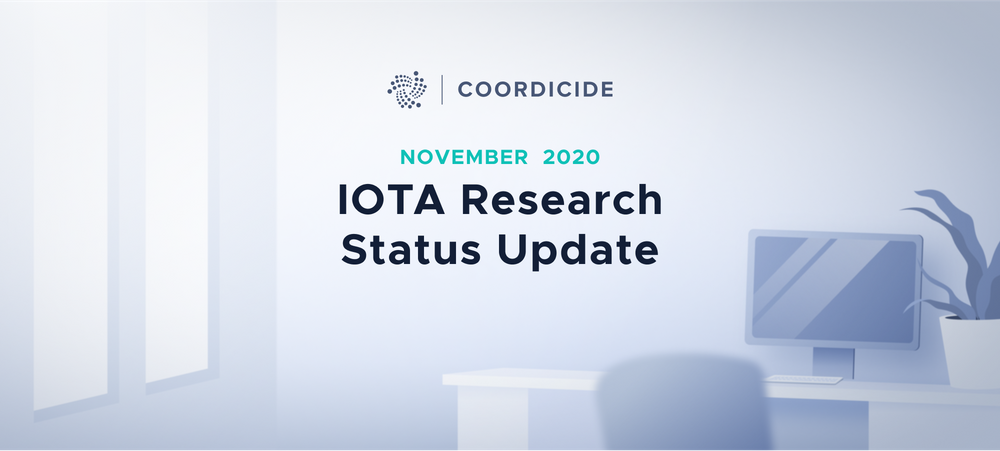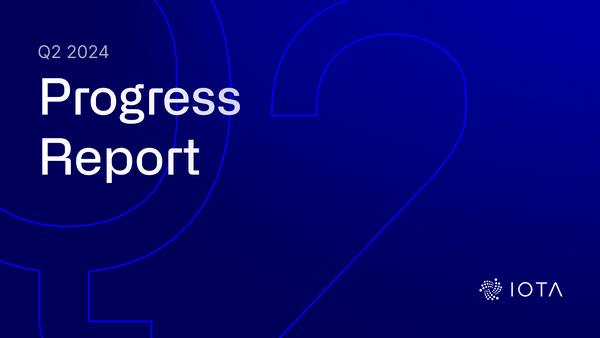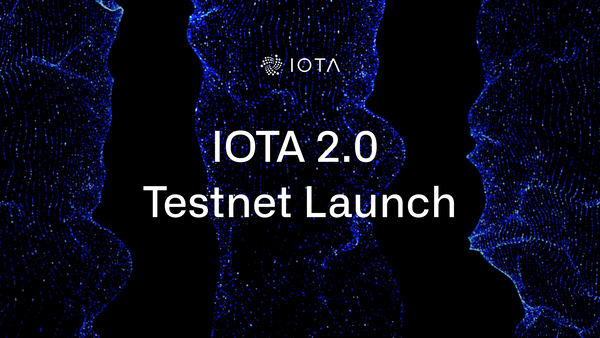IOTA Research Status Update — November 2020
This month our researchers have been hitting their stride on various projects. Good progress continues to be made on our Pollen testnet. We are especially grateful for the community participation in testing at this stage. We are encouraged by the level of interest. Elsewhere, we continue our regular engagement with our several grantees, who are doing fabulous work.
Meanwhile, some of our teams continue proving all the Coordicide components through our internal validation tests. It is exciting to watch all these moving parts in motion, as we move towards the launch of IOTA 2.0. Here is an overview of monthly updates from our research groups:
Pollen Testnet Implementation.Last month we released Pollen testnet v0.3.0. The main feature of this update is the integration of our distributed random number generator (dRNG). You can read more about it on our release notes blogpost and on the GoShimmer wiki page if you want to learn how to interact with it via API.
The team has also made progress on the mana branch. We have added new integration tests to make sure that both persistence and allowed pledge IDs work as expected. A new client lib has been integrated to easily interact with the mana API. We have also focused on building research-oriented toolings such as a special dashboard to better study the different dynamics of mana. You can read more about this on this Github PR.
Most of the current effort is being devoted to refactoring the Message Tangle and removing the Value Tangle by directly embedding the transactions as the payload of a message. This design allows for cleaner and easier management of both data and transactions in terms of inclusion and finality. To this end, we are also developing a new mechanism that should minimize honest transactions (as well as data) getting orphaned, by assigning a different meaning to the parents of a message.
Our community engagement and support during this development and testing phase is exceptional. The help from our community members, including the GoShimmer X-Team, is materializing in concrete results. This is demonstrated by a community-driven entry node made available for everybody wishing to join the Pollen testnet.
Pollen Testnet Study Group.We concentrated mainly on the autopeering module of the Pollen network. As everyone that runs a node knows, the autopeering is fast and reliable. There are more than 200 nodes online in the testnet; the network topology is close to optimal and resembles a d-regular random graph. We are preparing the next upgrade of the autopeering module that will incorporate mana. Mana serves in the autopeering as a Sybil protection mechanism; nodes of similar mana should peer together. Naturally, this Sybil protection comes at the cost of a possible increase in the network’s latency. For this reason, we are running additional simulations to optimize the parameters of the autopeering mechanism. This will help to find the sweet spot that allows a high Sybil protection and a low network latency for broad classes of possible mana distributions.
Protocol.In the protocol group this month we checked simulations on orphanage rate for our Tip Selection Algorithm (TSA). The results obtained were overwhelmingly positive (natural orphanage happening once every month on average)! This allowed us to propose an improved version of TSA that has both a low approval rate (on average) and does not incentivize lazy behavior. This kind of result also made us able to check that our proposal for snapshotting was going fine.
We advanced on the writing of the bootstrapping specifications, and it should start to be reviewed soon! After the recent ReSum, we have had some more work to do on topics discussed there, such as changing the way we deal with solidification to avoid queueing, changes to the way approval works (to simplify second layer applications on the Tangle), and the recent proposals to resolve the dusting attack problem.
We are quite happy with this month’s advances. We look forward to having good answers and proposals for the topics discussed here for the next month!
Networking.In the networking group, we are performing extensive attack analysis on our congestion control algorithm before being implemented in the Pollen network. Attacks tested include, but are not limited to, (i) malicious nodes exceeding their allowed rate, (ii) sending different streams of messages to different nodes, or (iii) combined attacks from multiple nodes at the same time. Simulations showed that apart from blacklisting malicious nodes, messages inside a given queue must be sorted according to their timestamp in order to guarantee the consistency of the system.
We would also like to mention that our work “Implementation Study of two Verifiable Delay Functions” has been presented at the 2nd Tokenomics Conference held in Toulouse (France) on October 26–27.
Sharding. This past month we have spent time refining our ideas. The research department was, fortunately, able to meet again this past month. At this meeting, we began formulating the open questions surrounding the fluid sharding idea. We also more clearly defined the problems we are trying to solve. This is a very critical step in early research: vague problems always elude clever solutions. Over the next month, we will continue to define and study the open problems.
In our previous update, we mentioned a second-layer scaling solution for data which we have temporarily dubbed “data sharding.” We have further studied this idea and have an outline of a seemingly viable and relatively simple method that would allow very high throughput for data messages which can support important applications like Access, Streams, and DID. We have begun to write a document that will describe this idea in detail.
Thanks for reading, and if you have any questions or would just like to say hi, you can find our Research team members in the #tanglemath channel on our Discord. You are also welcome to follow and participate in our technical discussions on our public forum: IOTA.cafe.
Subscribe to the Newsletter here and receive it directly to your email
Follow us on our official channels and get the latest news!




